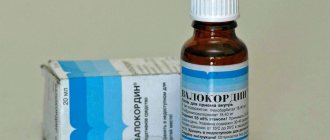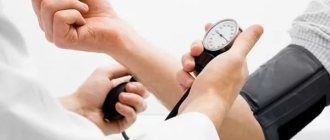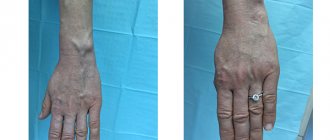Insomnia (insomnia) is a widespread pathological condition, covering, according to published epidemiological data, 9-15% of the adult population of the world [1], and in Russia, according to survey results, its frequency can reach 20% [2]. Insomnia is characterized by recurrent problems with the initiation, duration, continuity or quality of sleep that occur in the absence of sufficient time and conditions for sleep and are accompanied by disruption of daytime activities. Short-term (lasting up to 3 months) insomnia disorders, which in the International Classification of Sleep Disorders (ICSD-3) [3] are classified as acute (short-term) insomnia, occur most often against the background of stressful situations and at certain periods of life and are observed in the majority of people. people [4]. The relevance of the problem of acute insomnia is due to the fact that in the presence of certain predisposing and perpetuating factors and in the absence of adequate treatment, it easily transforms into chronic, which is much less amenable to correction and causes a significant deterioration in health.
Among the drugs with a hypnotic effect used to treat insomnia, the H1-histamine receptor blockers diphenhydramine and doxylamine succinate (doxylamine) are widely known. Doxylamine, which appeared on the pharmaceutical market in 1948 [5], has a pronounced antihistamine, sedative and antiemetic effect (thanks to the latter, it is used in the complex treatment of nausea in pregnant women). A number of studies have demonstrated the positive effect of doxylamine drugs in the treatment of insomnia, comparable to the effect of benzodiazepines and so-called Z-hypnotics [6, 7]. Preparations in which the active ingredient is doxylamine (doxylamine preparations) are classified as over-the-counter sleeping pills in most countries. They do not cause dependence or withdrawal phenomena, and can be used for sleep apnea and during pregnancy, when most other sleeping pills are contraindicated. Restrictions on the use of doxylamine in the treatment of insomnia: anticholinergic effect of the drug, the possibility of developing side effects such as dry mouth, palpitations, constipation, urinary retention, headache, tremor, dizziness, impaired accommodation, drowsiness after waking up, etc. However, the side effects of the drug are rarely pronounced and therefore most often do not cause discontinuation of use. The main indication for the use of doxylamine is transient sleep disorders. In chronic insomnia, its use is not pathogenetically justified and may be accompanied by the formation of tolerance.
Until recently, the only doxylamine preparation on the pharmaceutical market of the Russian Federation was Donormil (Bristol-Myers Squibb, France). In 2013, the domestic drug doxylamine reslip (pharmaceutical enterprise Obolenskoye) was registered and included in the State Register of Medicines.
The purpose of this study is to evaluate the effectiveness of the drug Reslip in acute insomnia compared to the drug Donormil.
Content:
- Story
- Action
- Phenobarbital
- Contraindications and complications
- Consequences of excessive use
- Signs of addiction
- The dangers of addiction
Valocordin is one of the most popular medications used to quickly restore peace of mind and improve heart function. It is sold without a prescription and can be found in almost any medicine cabinet. Meanwhile, it is not as harmless as it might seem. The product contains a serious substance with psychotropic effects - phenobarbital. If you take Valocordin excessively, the consequences can be disastrous, since it is addictive and sometimes provokes serious complications.
Story
Valocordin is a medicine that was created in Germany. Widespread sales began in 1934. After some time, the drug became available in the USSR, and then domestic specialists, based on it, created a medicine with a similar composition and almost similar effect - Corvalol. Currently, the medicine is no longer produced abroad, but is still popular in Russia due to its availability, low price and rapid onset of effects. It can be bought at any pharmacy without a prescription.
Action
Many people believe that Valocordin is a medicine for treating heart disease. Actually this is not true. The drug has a moderate sedative effect, calms and relaxes. Due to the depressing effect on the central nervous system, the state of the whole organism changes. Blood pressure decreases and heart rate decreases. But these effects are significant only for small deviations from the norm and do not eliminate any violations in the presence of serious pathology.
In addition, thanks to its calming effect, the drug helps against insomnia and eliminates excessive nervousness. In large doses, it relieves intestinal and stomach colic, but is practically not used for this purpose, since the consequences of an overdose of valocordin exceed the benefits of normalizing the functioning of the digestive system.
To improve the condition with a single dose, only 15–30 drops are enough, the result is noticeable within 15–20 minutes. With constant use, the required dose increases, the effects become less pronounced, which facilitates the use of large quantities of the drug. Along with this, another unpleasant effect is observed - valocordin does not cure, but only temporarily eliminates the symptoms. The person does not go to the doctor, but “suppresses” the disease, which continues to progress, destroying the body.
Phenobarbital
The seemingly harmless, easily accessible “penny” drops contain a substance from the barbiturate group, which has a pronounced psychotropic effect. The main consumers of valocordin are elderly people who are accustomed to trusting familiar things and often do not know or do not take into account the fact of the presence of phenobarbital in a medicine known since childhood. Meanwhile, barbiturates can be addictive.
Another category of Valocordin “lovers” are drug addicts who want to enhance the effects of other drugs or to more easily endure withdrawal symptoms in the absence of the right drug. They are well aware of the composition of the drops, which is why they are purchased and taken in doses many times higher than therapeutic ones.
results
Baseline assessments of insomnia severity, subjective sleep quality, and daytime sleepiness levels did not differ significantly between groups (Table 2).
Table 2. Initial assessments in groups on the ITI, PSHS and ESDS scales
According to the physician-researcher, in group P, 17 out of 30 (56.7%) patients achieved full clinical effectiveness in the treatment of acute insomnia, fully or partially associated with taking the drug, 12 (40%) achieved partial clinical effectiveness, 1 ( In 3.3%) cases, a lack of clinical effectiveness was observed. In group D, 18 out of 30 (60%) patients showed complete clinical effectiveness, fully or partially associated with taking the drug, 8 (26.7%) had partial clinical effectiveness, 2 (6.7%) had no clinical effectiveness , in 2 (6.7%) - worsening of acute insomnia. The differences between the groups turned out to be statistically insignificant.
After treatment in group P, the ITI index decreased to 8.5±0.89 points ( t
=9.55;
p
<0.001), PSHKS - up to 8.4±0.41 points (
t
=6.81;
p
<0.001), ESDS - up to 4.2±0.50 points (
t
=4.24;
p
<0.001) .
In group D, the ITI index decreased to 9.1 ± 0.97 points ( t
= 7.61;
p
< 0.001), PSHKS - to 8.8 ± 0.62 points (
t
= 5.27;
p
< 0.001), ESDS - up to 4.6±0.67 points (
t
=3.45;
p
<0.01). There were no statistically significant differences in post-treatment results between groups.
In group P, side effects were observed in 3 (10%) patients, including 2 - drowsiness in the morning after waking up, 1 - headache. In all cases, side effects were insignificant and did not cause discontinuation of the drug. In group D, side effects appeared in 7 (23.3%) patients: 2 - tremor, 1 - drowsiness in the morning after waking up, 1 - headache, 1 - mild dizziness, 1 - lack of appetite after waking up. In general (in 5 cases), side effects were insignificant and did not cause discontinuation of the drug. In 2 cases (tremor) the drug was discontinued. There were no significant differences in the frequency of side effects between the groups.
Contraindications and complications
Failure to follow the recommendations when taking medication can lead to dangerous consequences. To prevent this, you should read the instructions before starting treatment. The medicine should not be taken if you have kidney or liver failure, or while pregnant or breastfeeding.
After using the product, it is better to refrain from driving a car or operating dangerous machinery, as it slows down the reaction and impairs the ability to concentrate. If you take Valocordin and alcohol at the same time, the consequences can be tragic . These substances are incompatible - the medicine makes ethanol more toxic, as a result of which severe alcohol poisoning occurs even when drinking a moderate dose of alcohol.
Is it possible to combine Valocordin and alcohol?
Valocordin and alcohol are an equally dangerous combination. This drug also contains phenobarbital, the combination of which even with small doses of alcohol is fraught with the development of colic, tachycardia, and increased load on the liver.
Libations that occurred simultaneously with the use of the medicine can result in:
- a sharp drop in blood pressure;
- coordination and speech disorders;
- dizziness;
- confusion.
Valocordin is also unsafe in case of severe hangover. In such a condition, there is a possibility of developing serious disturbances in the functioning of the cardiovascular system, leading to myocardial infarction and coronary heart disease.
Also, you should not take Corvalol or other drugs containing phenobarbital while on a binge. In this state, their use can result in coma and the need for serious treatment.
Phenobarbital is also contained in Valoserdin, Tetralgin, Pentalgin, Luminal, and therefore you should avoid taking them simultaneously with alcoholic beverages.
Excessive use
Taking large doses can provoke complications from the central nervous system and internal organs. Negative effects can be divided into three groups , corresponding to the degrees of phenobarbital poisoning.
- Easy. Characterized by weakness, passivity, drowsiness, slow speech, decreased ability to concentrate. Digestive disorders and the development of allergic skin reactions: swelling, redness, rashes may occur.
- Medium-heavy. There is marked muscle weakness, hypotension, and slight hyperthermia. The person falls into deep sleep lasting from 1 to 2 days. Awakening is impossible or difficult and ineffective due to inhibition and inability to make productive contact.
- Heavy. Depression of the respiratory center results in respiratory and cardiovascular disorders. A barbiturate coma with the development of acute heart failure and pulmonary edema cannot be ruled out. There is a serious threat to life, and in the absence of urgent medical care, death is possible.
With regular, long-term use, addiction develops - a person begins to take Valocordin not to eliminate unpleasant symptoms, but for pleasure and relaxation.
Material and methods
The multicenter open randomized study involved 6 medical FMBAs of Russia (Moscow), Irkutsk State Medical Academy of Postgraduate Education of the Ministry of Health of Russia (Irkutsk), a group of specialized medicine clinics "Medical Standard" (Ufa), and the Center for Aesthetic Medicine "Renovatsio" ( Krasnoyarsk), Federal State Budgetary Institution "Research Institute of Physiology and Fundamental Medicine" (Novosibirsk), Federal State Budgetary Educational Institution of Higher Education "Samara State Medical University" (Samara). The organizer and coordinator of the study was the all-Russian public professional organization “Russian Society of Somnologists”.
The study included 60 patients, including 35 (58.3%) women and 25 (41.7%) men, aged from 30 to 59 years, average age 43.7±1.04 years ( M±m
), suffering from transient sleep disorders with a frequency of 3 or more times a week lasting less than 3 months, who were first diagnosed with acute insomnia. Exclusion criteria: hypersensitivity to doxylamine or other components of the drugs and contraindications to their use (closed-angle glaucoma, prostatic hyperplasia, lactase deficiency, lactose intolerance, glucose-galactose malabsorption), diseases of internal organs in the stage of decompensation, an established diagnosis of obstructive sleep apnea syndrome or its high probability, the presence or high probability of other sleep disorders, severe cognitive impairment, alcoholism, drug or drug addiction.
Patients were randomized by serial number into two equal groups that did not differ in age and gender: group P (control) and group D (comparison) (Table 1).
Table 1. Sex and age composition of patient groups
Patients of group P ( n
=30) prescribed the drug Reslip at a dose of 15 mg orally 15-30 minutes before going to bed every day for 7-10 days.
Patients in group D ( n
=30) took the drug donormil in a similar dose and according to a similar schedule. Before treatment, the subjects of both groups filled out questionnaires to assess the severity of insomnia, subjective sleep quality and level of daytime sleepiness: Insomnia Severity Index (ISI), Pittsburgh Sleep Quality Scale (PSQS) and Epworth Daytime Sleepiness Scale (EDS). After the end of therapy, the questionnaires were filled out again and the researcher assessed its clinical effectiveness (complete, partial, absence, deterioration) and the relationship with taking the drug. Side effects were assessed throughout the study. Data processing was carried out using statistical processing methods.
Signs of addiction
The following symptoms indicate the development of pathological addiction:
- constant use of drops under any pretext and even in minor stressful situations;
- ritual behavior: a sense of the importance of the action, careful preparation for the reception, priority over other matters;
- a person's inability to sleep or calm down without medication;
- gradual increase in dose, noticeable by the number of bubbles in the first aid kit and in the trash;
- the tendency to create a stock by buying several pieces at once;
- restlessness, depression and irritability when the drug runs out or is unavailable.
The dangers of addiction
If a patient constantly uses Valocordin, the consequences may include:
- Decreased cognitive function. The intellect suffers, memory deteriorates, the person becomes distracted and unable to concentrate.
- Mental disorders. The development of depressive and anxiety disorders, panic attacks and paranoid moods is possible. People suffer from increased drowsiness or, on the contrary, insomnia.
- Overdose. The accumulation of phenobarbital in the body, combined with the habit of choosing a dose “by eye,” can cause an unexpected overdose, which in older people is often complicated by respiratory disorders and can cause death.
- Accidents. Lethargy, drowsiness, slow reactions and inattention lead to unpleasant and sometimes tragic incidents. People forget to turn off the water, gas or electric stove, do not lock the door, fall or get hit by a car.
Absent-mindedness and forgetfulness should not be attributed to age or fatigue. If you or a loved one taking Valocordin have similar symptoms, you should see a doctor to understand the reasons.
VALOCORDIN (drops)
and Russian-made Corvalol - much cheaper).
Valocordin is sold in a box like this: Each of the four sides of the package contains, in general, useful information. This one, for example, indicates that the box contains a sedative and the country of origin (Crevel-Meuselbach, Germany).
Here we see an explanation of what these are drops, the indicated dosage and conditions of release (without a prescription).
Indications for use: disorders of the cardiovascular system, neuroses, insomnia, states of nervous excitement.
And finally, the most informative side of the box is the composition. As you can see, in the first place is nothing more than phenobarbital (smacks of mild drug addiction, because it is a barbiturate; used as a sleeping pill/sedative). Next comes such a masterpiece of organic chemistry as ethyl bromizovalerianate (I have no idea what it is, but bromine and valerian are weak sedatives, and bromine also has side effects). The oils - mint and hop - do not raise any questions, but the ratio of water and alcohol in the composition suggests that the contents of our bottle have a strength of about fifty degrees (for core drinkers - just that... just kidding). Where are the components that have a positive effect on disorders of the cardiovascular system? But they are not there, ladies and gentlemen.
Storage conditions are from 15 to 25 degrees Celsius, but for some reason everyone stores it in the refrigerator, including me.
On the top cover, as usual, the series, production date and expiration date are indicated.
Below is a barcode, scanning of which confirms the German origin of the drug.
Now let’s open the box and admire our “funfirik”:
By unscrewing the cap, you can see the dispenser:
I will not provide instructions here, since there is nothing in it that contradicts what is written on the box; all it contains is more detailed information from the packaging, nothing more.
Let's talk about application. Everything is simple here: pour a little water into a glass, so that the water barely covers the bottom. Next, open the bottle and drip, counting 20 (or as many as you need) drops. Here you should be careful and keep the bottle exactly perpendicular to the floor - otherwise the drops will flow down the neck. It’s easy to determine where exactly the drops are coming from - they drip from the dispenser quickly and they are small, but if they flow down the neck, the drops will be larger and drip much more slowly. In a word, you need to get used to it.
When drops get into the water, the water becomes cloudy, this is due either to the oils in the composition, or to alcohol, which, when it gets into the water, also produces cloudiness. In general, this is a normal reaction; for those who drip for the first time, don’t be alarmed, this is how it should be. After dripping, you should drink this dregs, wash it down with a couple of sips of water and go lie down for half an hour, preferably without thinking about anything, which is not always possible for everyone. Actually, the whole process of taking Valocordin consists of this.
It is impossible not to mention the smell of Valocordin. I would not say that it is unpleasant, but it is very persistent - you drip, say, in the kitchen, and the smell spreads throughout the living space and hangs in the air for another half hour if you do not ventilate it. If you ventilate, it still does not evaporate as quickly as we would like. This means that if you - or someone in your household - took the droplets, everyone who shares your living space will know about it. So, it will not be possible to take this drug quietly.
Now let’s figure out how in this way a remedy that contains nothing but a sedative “quenches” discomfort in the heart. I’ll tell you a secret - it doesn’t extinguish it; all that happens during the appointment is that the patient feels that something is wrong with his heart, begins to get nervous, takes this set of sedatives, lies down on the sofa for about twenty minutes and gradually calms down. The effect is aggravated by the same phenobarbital, which also causes slight drowsiness (those who take twenty drops often fall asleep - as you can see, for good reason). Our heart perceives this simple calming mechanism as first aid.
This implies the following - Valocordin IS NOT a drug useful for heart patients, it is nothing more than a weak, over-the-counter sedative. Why then do heart patients unanimously claim that Valocordin helps them, and each of them has such a bottle in the refrigerator? Again, pure psychology - the nerves will calm down - the heart will calm down, because the cardiovascular and nervous systems are very closely connected: a stabbing in the heart - a person begins to get nervous, if nervous - the pulse and pressure rise, such a vicious circle. And Valocordin only suppresses the feeling of anxiety, after some time after which the heart function returns to normal.
Thus, for heart patients, Valocordin only postpones the problem, but does not solve it. And at this time the heart continues to wear out... The conclusion is not to run to get drops for any reason, but go to a competent cardiologist; An illiterate person will prescribe what for you? That's right, Valocordin.
We've sorted out the heart problems, now let's talk about those suffering from neuroses and insomnia. With insomnia, everything is clear, because it contains phenobarbital (although there is not enough of it to “put to sleep” a person with insomnia, and not with hypochondria - that is, who believes that he has insomnia, which he actually has) no matter). For neuroses - yes, it helps, but not for such a long time; however, in this situation, 20-25 drops 3 times a day - i.e. the recommended dosage - may well help you out. But, again, this will not be a solution to the problem, it will be another delay in its solution. Therefore, if I were in such a situation, I would look for a competent psychotherapist instead of swallowing drops - there would be more benefit, and there would be no harm to the body at all.
From everything I’ve written here, it seems to follow that Valocordin is completely useless. This is not true; in two cases it brings tangible benefits. The first case is if you cannot sleep; for example, some thoughts pop into your head, and that’s it. In this case, you can take twenty drops to make it easier to fall asleep - it helps, I checked it (and now I check it from time to time). However, it will help you fall asleep only if this situation happens to you only from time to time, and does not happen every night. If you can’t sleep every night, it’s better to buy a normal sleeping pill (now there are sleeping pills even without barbiturates, like Melaxen), go to a psychotherapist, or try treatment with all the well-known Russian folk remedies - for the most severe ones.
The second case when Valocordin can be beneficial - and this is the non-standard use I promised at the beginning of the review - is precisely related to the above-mentioned Russian folk remedy. Imagine a situation - a birthday, a corporate party, but who knows, there are many cases in life when a person at the festive table did not calculate his strength, and in the morning he, to put it mildly, does not feel very good? Valocordin will not alleviate a hangover in any way - but it does an excellent job of removing the characteristic smell from the mouth, twenty drops - that's all. If necessary, repeat, but keep in mind: this method is only suitable for absolutely healthy people, if there are any abnormalities in the nerves and especially the heart, it is better not to do this (everything said in this paragraph applies to a lesser extent - to Valoserdin, and does not apply - to Corvalol, which is less “smelly”.
The conclusion suggests itself: for heart patients, Valocordin is useless (not in terms of sensations, but from a medical point of view), for neuroses, in general, too; It can only be useful for making it easier to fall asleep, and with reservations - for a hangover. It’s a little expensive to buy such a product for 250 rubles, isn’t it? However, it is everyone’s personal business what to treat and how to treat it; In this review I only expressed my opinion and tried to substantiate it. Whether to take note of it or not is not for me to decide. Due to the price and (in)action, the drug does not deserve more than a two, and I also cannot recommend it - since I do not have a diploma in medical education.











